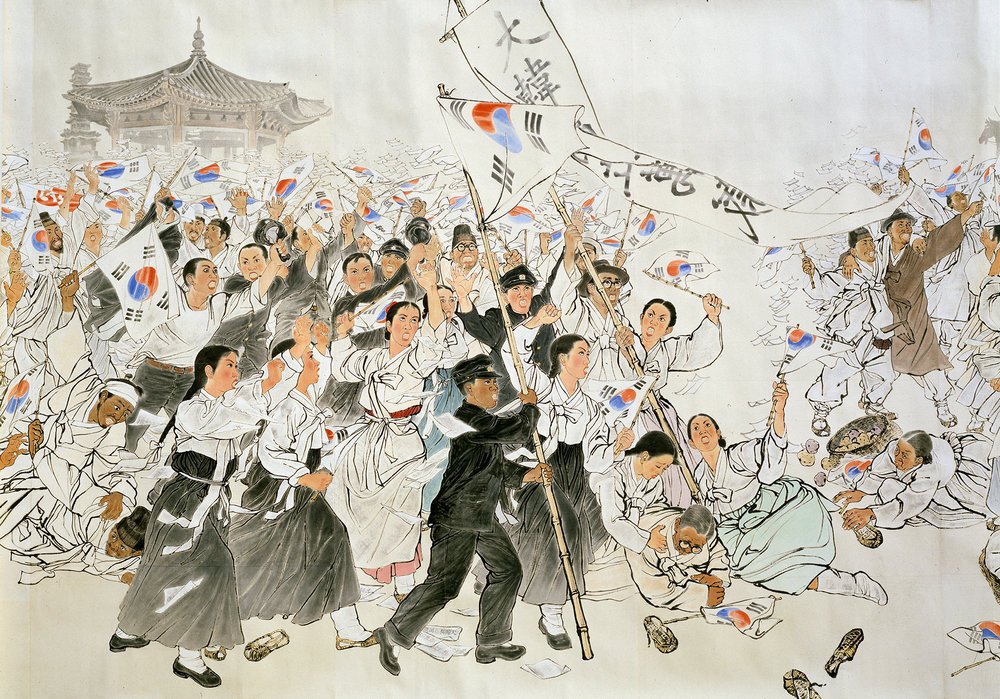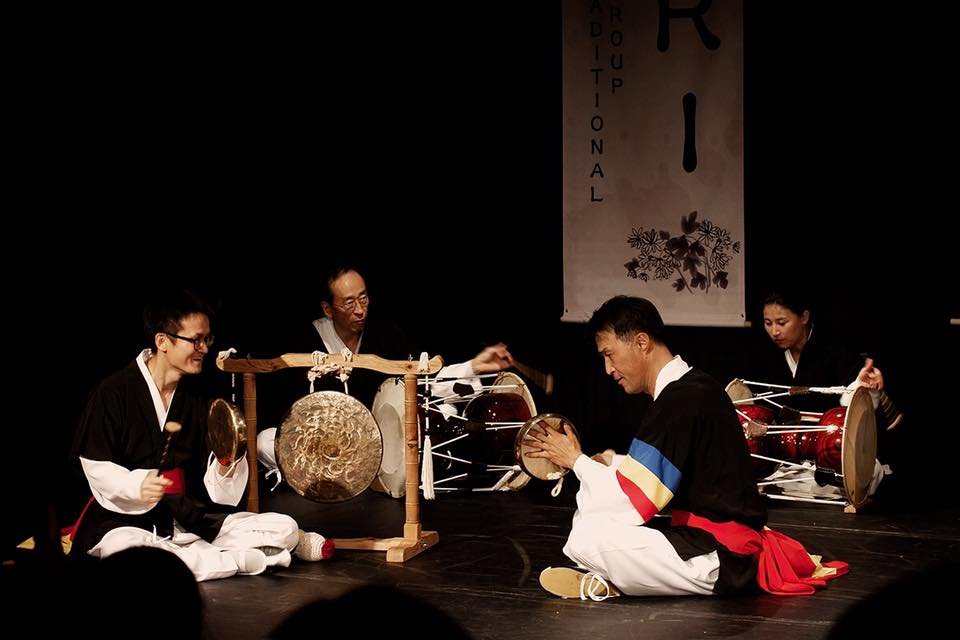
From Sea to Shining Sea: The Third Wave of Korean American Immigration
March 1984. A small airplane labeled “Korea Air” lands on the tarmac of Los Angeles International Airport. Among the passengers is a young girl eager to reunite with her father, a family searching for a fresh start, and a young man seeking odd jobs to bring his wife and children to America.

The March 1st Movement (삼일 운동)
Today marks the anniversary of the March First Movement, or Sam-il (3-1) Independence Movement (삼일 운동), a series of protests from Korean civilians and students calling for Korean independence from Japanese oppression and forced assimilation.

From Sea to Shining Sea: The Second Wave of Korean American Immigration (1950-1964)
From Sea to Shining Sea is a KAYAT blog series that follows the three major waves of Korean American immigration.

The Four Noble Plants in Korean Art
The plum blossom, orchid, chrysanthemum, and bamboo. The four noble plants represent the cycle of the four seasons (the plum blossom for winter, the orchid for spring, the bamboo for summer, and the chrysanthemum for autumn) and symbolize Confucian traits such as purity, humility, and perseverance.

From Sea to Shining Sea: The First Wave of Korean American Immigration (1903-1949)
From Sea to Shining Sea is a KAYAT blog series that follows the three major waves of Korean American immigration.

Pansori: A Story in Song
In an echoing theater, the beat of drums punctuates a haunting voice. As the singer narrates a tale of kings, deities, and heroes, her voice fluctuates with every scene, wavering with sadness and expanding with rage. This performance, called pansori (판소리), is a form of traditional Korean musical storytelling.

Tteokguk (떡국): Soup of the (New Year’s) Day
Steam clouds the rim of the bowl, and the broth’s savory notes waft around the dinner table. Tteokguk (떡국), a Korean sliced rice cake soup, is traditionally made and eaten in celebration of Korean New Year, or Lunar New Year, and some Korean and Korean American families also enjoy this soup on New Year’s Day (January 1).

Catch the Hallyu Wave: Behind The Success of South Korean Entertainment
K-pop groups with snappy names and psychedelic music videos accumulate billions of views. K-drama characters with tragic backstories and slow-motion falling scenes capture the hearts of international fans. Hallyu, or the Korean Wave, is the coined catch-all for the growing global popularity of Korean culture.


Buchaechum: Fans of the Korean Fan Dance
Buchaechum (부채춤) is neoclassical Korean fan dance, meaning it draws influence from various traditional Korean dances, including religious rituals and Joseon court and folk dances.

How to Make Squid Game’s Dalgona Candy!
Dalgona (달고나) or ppopgi (뽑기) was a Korean street candy in the 1970s and 1980s that has surged in popularity after the release of Netflix’s hit Korean drama Squid Game.

Samulnori: A Drumroll for Traditional Korean Percussion
Samulnori (사물놀이) is a genre of traditional Korean percussion. This word translates to “samul,” or four objects, and “nori,” or play, which succinctly describes the four instruments used to create music.

Celebrating Chuseok!
Chuseok is a three-day harvest festival in autumn on the 15th day of the 8th month of the lunar calendar. It is one of Korea’s most important and celebrated holidays, harkening back to Korea's history as an agricultural society.

KAYAT Presents the Autumn Sijo Contest!
The Korean American Youth Artists of Texas presents the Autumn Sijo Contest to showcase a wonderful form of Korean poetry: sijo.

Sijo: Learn to Write Korean Poetry!
Sijo (시조) is a three-line form of Korean verse poetry, popular among nobility during and after the Goryeo period. This style often features romantic, abstract, natural, or religious topics and models a set pattern.

Happy Korean Independence Day!
Happy Gwangbokjeol or Korean Independence Day! August 15th marks Gwangbokjeol, which translates to “bringing back the light.”

Talchum: Unmasking the Korean Mask Dance
The echo of drums. The hum of a haegeum. Dancers in colorful, characterized masks twirl on the stage. Their long white sleeves trail in arching parabolas.
